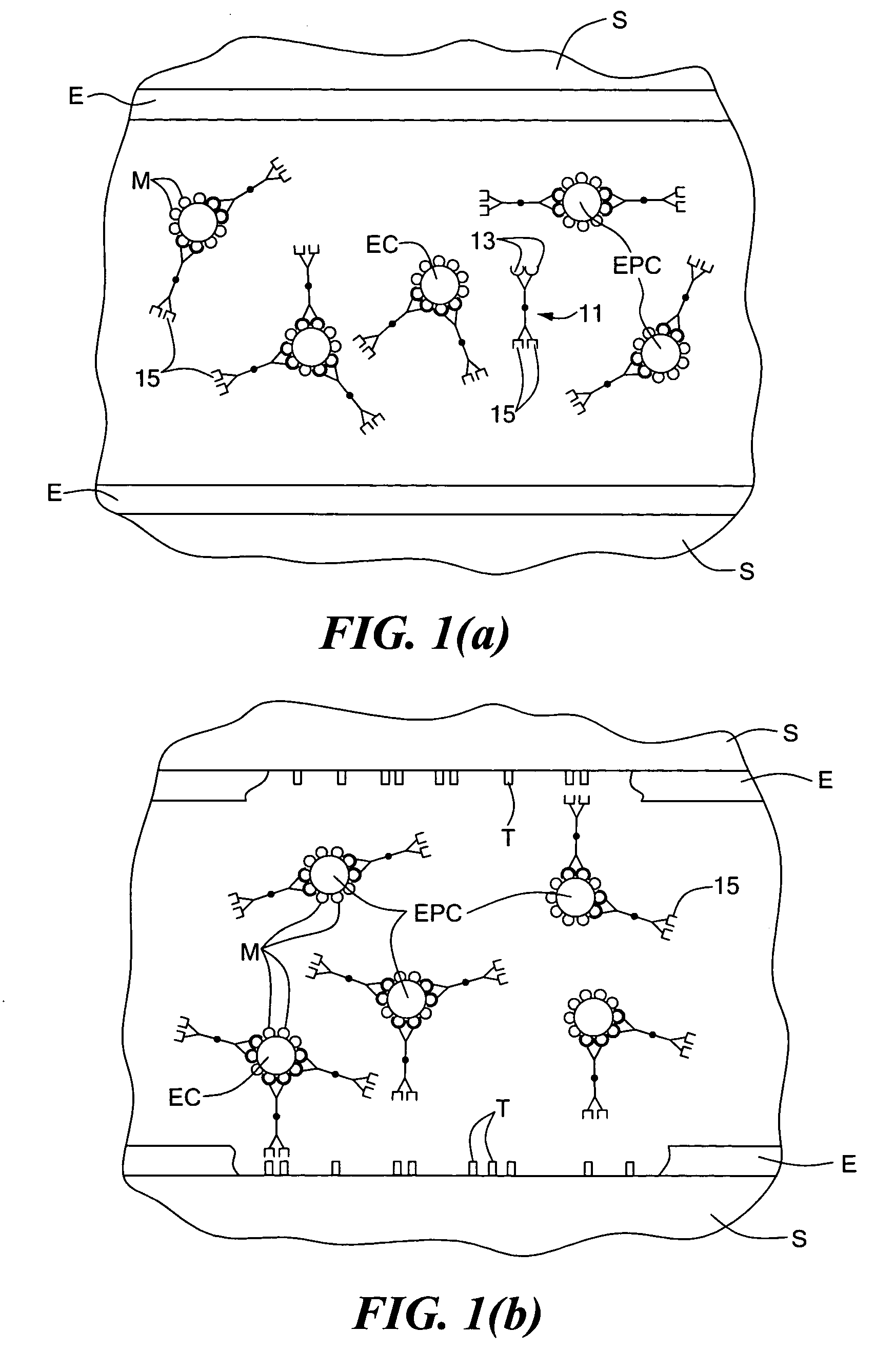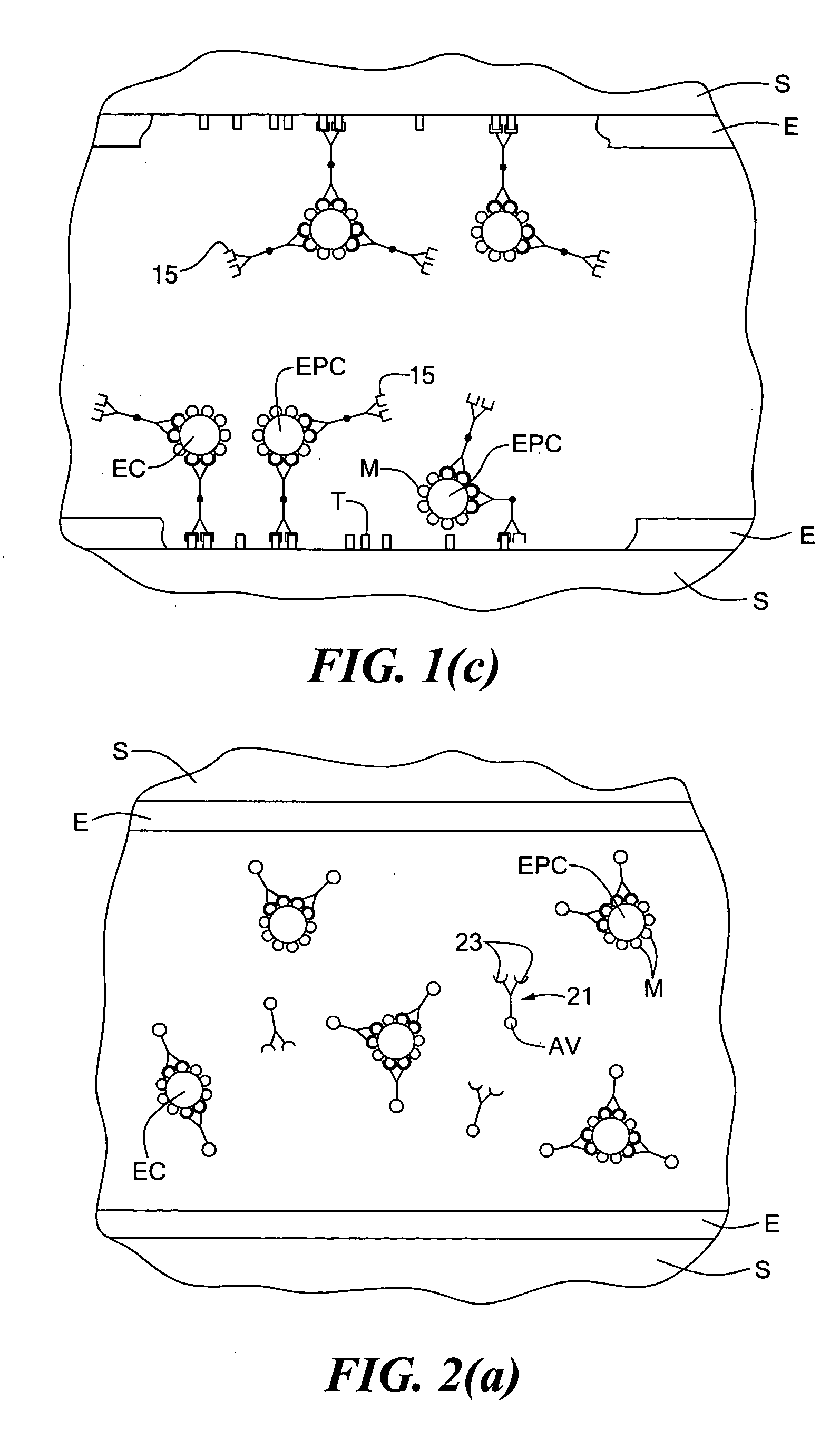Endothelialization of vascular surfaces
a technology of endothelialization and vascular surface, which is applied in the direction of blood vessels, prostheses, antibody medical ingredients, etc., can solve the problems of ischemic damage to the tissues supplied by the artery, death or subsequent heart failure, and angina with exertion or even at res
- Summary
- Abstract
- Description
- Claims
- Application Information
AI Technical Summary
Benefits of technology
Problems solved by technology
Method used
Image
Examples
first embodiment
[0040] this acceleration of EPC (or, preferably, both EPC and EC) seeding is accomplished by introducing into the bloodstream of a patient, e.g., by injection, a quantity of a multispecific antibody, said multispecific antibody comprising a first antigen binding site and a second antigen binding site, said first antigen binding site being directed against a surface marker of endothelial progenitor cells (said surface marker preferably also being a surface marker of endothelial cells), said second antigen binding site being directed against a subendothelial epitope. The multispecific antibody is preferably introduced into the bloodstream just prior to performance of the angioplasty (but may also be introduced during or after the angioplasty) and is introduced in a quantity sufficient to bind a high percentage of circulating EPCs (and, preferably, circulating ECs as well). In this manner, once the angioplasty has been performed and the target epitopes on the subendothelium have been e...
second embodiment
[0057]According to the technique, instead of introducing a multispecific antibody into the bloodstream of the patient, one first introduces into the bloodstream of the patient a first antibody directed against an endothelial progenitor cell surface marker (said surface marker preferably also being a surface marker of endothelial cells) and then introduces into the bloodstream of the patient a second antibody directed against a subendothelial epitope, one of said first antibody and said second antibody being conjugated to avidin, the other of said first antibody and said second antibody being conjugated to biotin. Preferably, the first antibody is introduced prior to performance of an angioplasty, and the second antibody is introduced at the time of angioplasty or soon thereafter. In this manner, the first antibody binds to the circulating EPCs (and, preferably, circulating ECs as well), and the second antibody binds to the exposed subendothelium, with the first and second antibodies...
third embodiment
[0059]According to the technique, a stent or like medical device, prior to being implanted within an artery on which angioplasty is performed, is coated with a compound against which a first antigen binding site of a multispecific antibody is directed, a second antigen binding site of the multispecific antibody being directed against an endothelial progenitor cell surface marker (said surface marker preferably also being a surface marker of endothelial cells). The multispecific antibody is preferably introduced into the bloodstream just prior to the performing of the angioplasty (and the subsequent deployment of the stent). Preferably, the compound coated onto the stent is also present in the exposed subendothelium so that the multi specific antibody promotes adherence of EPCs (and, preferably, ECs as well) onto both the exposed subendothelium and the stent. For example, the compound coated onto the stent may be collagen. Alternatively, the compound coated onto the stent may not be ...
PUM
| Property | Measurement | Unit |
|---|---|---|
| length | aaaaa | aaaaa |
| area | aaaaa | aaaaa |
| length | aaaaa | aaaaa |
Abstract
Description
Claims
Application Information
 Login to View More
Login to View More - R&D
- Intellectual Property
- Life Sciences
- Materials
- Tech Scout
- Unparalleled Data Quality
- Higher Quality Content
- 60% Fewer Hallucinations
Browse by: Latest US Patents, China's latest patents, Technical Efficacy Thesaurus, Application Domain, Technology Topic, Popular Technical Reports.
© 2025 PatSnap. All rights reserved.Legal|Privacy policy|Modern Slavery Act Transparency Statement|Sitemap|About US| Contact US: help@patsnap.com



